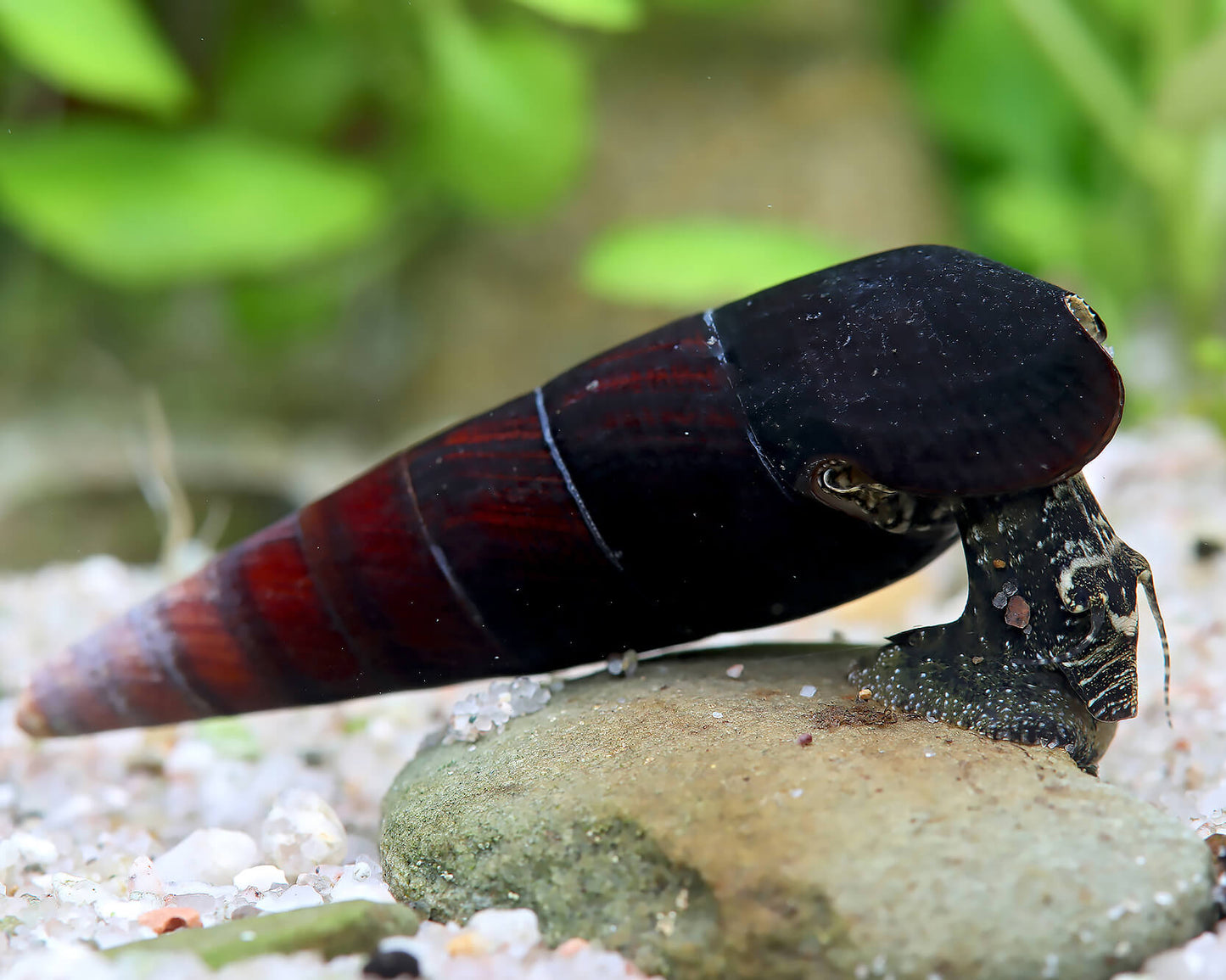Fish & Bird Emporium
Black Devil Spike Snail (Large)
Black Devil Spike Snail (Large)
Couldn't load pickup availability
| Name | Black Devil Snail |
| Common names | Black Devil Spike Snail, Black Spike Snail, Black Devil Snail, Lava Snail, Spike Live Snail |
| Scientific name | Faunus Ater |
| Tank size (minimal) | 10-gallons (~40 liters) |
| Keeping | Easy |
| Breeding | Difficult |
| Size | 5 – 9 cm (2 – 3.5 inches) |
| Temperature | 71° – 82° F (22° – 28° C) |
| Optimal PH | 7.0 – 8.5 |
| Optimal GH | 3 – 18 |
| Optimal KH | 3 – 12 |
| TDS (optimal) | 100 – 300 |
| Nitrate | Less than 20 ppm |
| Diet | Omnivore / Algae eater |
| Temperament | Peaceful |
| Life span | up to 6 years |
| Color Form | Black to brown |
The Black Devil Spike Snail is an extremely hardy species that is also a very effective algae eater! It is also known as Lava Snail or Faunus ater, these dark and mysterious snails are highly underrated members of the aquarium hobby.
They grow to a large size and feature gorgeous, glossy shells that range in color from chocolate brown to the deepest black. They mainly come from the brackish waters of Thailand, but can also be found in other parts of Asia. They can thrive in freshwater, but will only breed in brackish water.
Black Devil Snails have a relatively large, shell, reaching to 9 cm (~3.5 inches) in length but usually averaging about 5 – 6 cm (~2 – 2.5 inches). The average shell width ranges from 0.5 – 2 cm. Shell color is black in juveniles, turning to mahogany (black and brown in color) as the shell grows.
The shell is elongate, smooth-surfaced and comprises of around 6 to 20 straight-sided to slightly inflated whorls inflated towards the aperture side. The adult shells often have eroded apical whorls. The aperture is white and ovate.
Black Devil Snails are diggers and nocturnal. They usually spend most of the time buried in the substrate crawling through it. By doing so they prevent the risk of a gas pocket being built up which can be very dangerous to your fish or shrimp.
Black Devil Snails will do well in larger tanks. Keep in mind that they can grow up to 9 cm! Therefore, it is best to keep them in an established 10-gallon (~40 liters) tank. This gives them enough space to move and eat as they please.
The substratum is sandy (coarse and fine sand) or soil with a little gravel, silt clay. Keep in mind that, having hard substrates like pebbles, gravel will make it hard for them to bury.
Share


